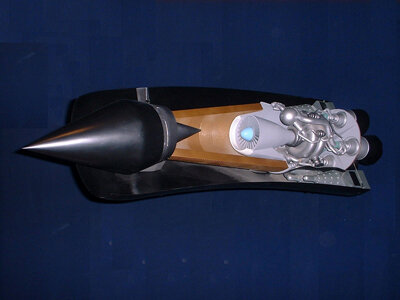Overview
Long-Term Advanced Propulsion Concepts and Technologies
To reduce the travelling time of long-distance flights, e.g. Brussels to Sydney, in about 2 to 4 hours, advanced propulsion concepts and technologies need to be developed. This requires a new flight regime with Mach numbers ranging from 4 to 8. At these high speeds, classical turbo-jet engines need to be replaced by advanced airbreathing engines.
Project Objectives
Two major directions at conceptual and technological level are considered: ram-compression and active compression. The latter has an upper Mach number limitation but can accelerate a vehicle up to its cruise speed. Ram-compression engines need an additional propulsion system to achieve their minimum working speed. Key objectives are the definition and evaluation of:

- different propulsion cycles and concepts for high-speed flight at Mach 4 to 8 in terms of turbine-based and rocket-based combined cycles
- critical technologies for integrated engine/aircraft performance, mass-efficient turbines and Heat exchangers, high-pressure & supersonic combustion experiments and modelling
Description of Work

A sound technological basis will be determined for long-term (20-25 years) to advance innovative propulsion concepts `The most critical RTD-building blocks will be identified employing dedicated analytical, numerical and experimental tools to address issues of the following road-map:

- two airbreathing engines for selected reference vehicle(s) and trajectory point(s)
- dedicated combustion experiments for supersonic and high-pressure combustion, including potential fuels and its interaction with flow-field turbulence
- modelling and validation of combustion physics on the basis of chemical kinetics and fuel spray vaporization models and turbulence affecting the combustion
- aerodynamic experiments for major engine components (intakes, nozzles, full engines), and establishment of data for interaction of vehicle and propulsion aerodynamics.
- evaluation and validation of advanced turbulence models to evaluate unsteady, separated flow regimes and to develop transition models based on intermittency related parameters
- performance prediction of contra-rotating turbines and light cryogenic fuel heat exchangers
Expected Results
The project duration is 36 months and will result in:

- definition of requirements and operational conditions for high-speed flight at system level
- dedicated experimental data-base specific to high-speed aerodynamics for supersonic and high-pressure combustion and flow phenomena.
- setting-up and validating physical models supported by numerical simulation tools to address supersonic and high-pressure combustion, turbulence and transition phenomena.
- feasibility study of weight performance turbine and heat exchanger components















 Germany
Germany
 Austria
Austria
 Belgium
Belgium
 Denmark
Denmark
 Spain
Spain
 Estonia
Estonia
 Finland
Finland
 France
France
 Greece
Greece
 Hungary
Hungary
 Ireland
Ireland
 Italy
Italy
 Luxembourg
Luxembourg
 Norway
Norway
 The Netherlands
The Netherlands
 Poland
Poland
 Portugal
Portugal
 Czechia
Czechia
 Romania
Romania
 United Kingdom
United Kingdom
 Slovenia
Slovenia
 Sweden
Sweden
 Switzerland
Switzerland




























